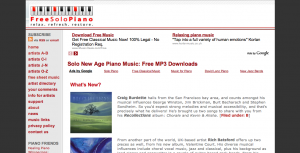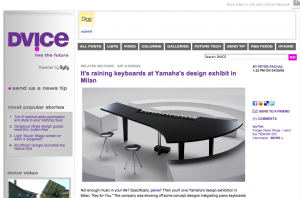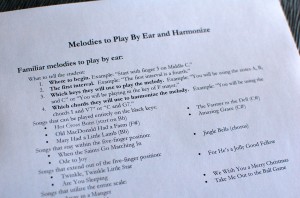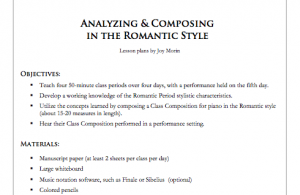This is a continuation of the series on the topic: incorporating improvisation into private piano teaching. I had originally planned to post all 4 steps into one post, but the post would be too lengthy. So the topic “Incorporating Improvisation” is being divided into 4 separate posts:
- Develop Related Skills
- Create an atmosphere conducive to improvisation
- Use improvisation as a way to introduce new concepts
- Improvise using a combination of learned concepts
Today, we are discussing step 2: Create an atmosphere conducive to improvisation.
2. Create an atmosphere conducive to improvisation.
For some students, improvisation will be easy and fun. For others, it may seem intimidating. Creating an atmosphere conducive to improvisation will help reassure students and encourage them to be creative, especially if they are only accustomed to reproducing what is on the page.
- No such thing as “wrong notes” — Be sure that the student understands that because they are the improviser,anything they play is correct! Getting over the fear of playing wrong notes will allow them to more easily focus on expressing themselves through their music.
- Share musical authority — The student should be encouraged to express themselves and create whatever sounds that are pleasing to his/her ears, instead of trying to figure out what they think the teacher might want to hear. The teacher should praise whatever efforts they hear and never be critical of the student’s improvisation. Even when improvisation is done together with the teacher or in group of students, musical authority should be shared.
- Set goals — It is helpful for the teacher to give the student some specific goals to focus on during an improvisation session. Some examples might be to utilize some new concepts introduced earlier in the lesson, or to tell a story with the music (to be discussed further in steps 3 and 4 below). Example: “Let’s try using the new articulations of stacatto and legato that we learned about today,” or “Let’s tell a story about a hiker climbing up and down a mountain.”
- Set parameters — Improvisation, no matter what kind, always has some parameters. Example parameters include: key, mode (major or minor), meter, tempo, black keys only or all keys, one or both hands, or a time limit. A teacher may give a number of parameters, for example: “Let’s improvise a slow piece together on the black keys. Let’s use only quarter notes and half notes. You can play in the upper register with just your RH, and I’ll play along with you in the lower register.” Parameters serve as guidelines to give the student direction as to how to improvise for that session.
Creating a conducive atmosphere is essential to successful improvisation.
Coming up next: Part 5c of Incorporating Improvisation into the piano lesson.
Be sure to check out the rest of the posts in the series:
Series: Incorporating Improvisation into the Piano Lesson
- Creativity in the Piano Lesson – Introductory musings.
- Top 3 Obstacles when Teaching Improvisation
- A Brief History of Improvisation
- The Value of Improvisation
- Incorporating Improvisation:
- 3 Benefits of Incorporating Improvisation (coming soon)





 So the topic “Incorporating Improvisation” will be divided into 4 separate posts:
So the topic “Incorporating Improvisation” will be divided into 4 separate posts:
 You can never have too much free music! Head on over to musictechtips.wordpress.com and check out this post:
You can never have too much free music! Head on over to musictechtips.wordpress.com and check out this post: 

